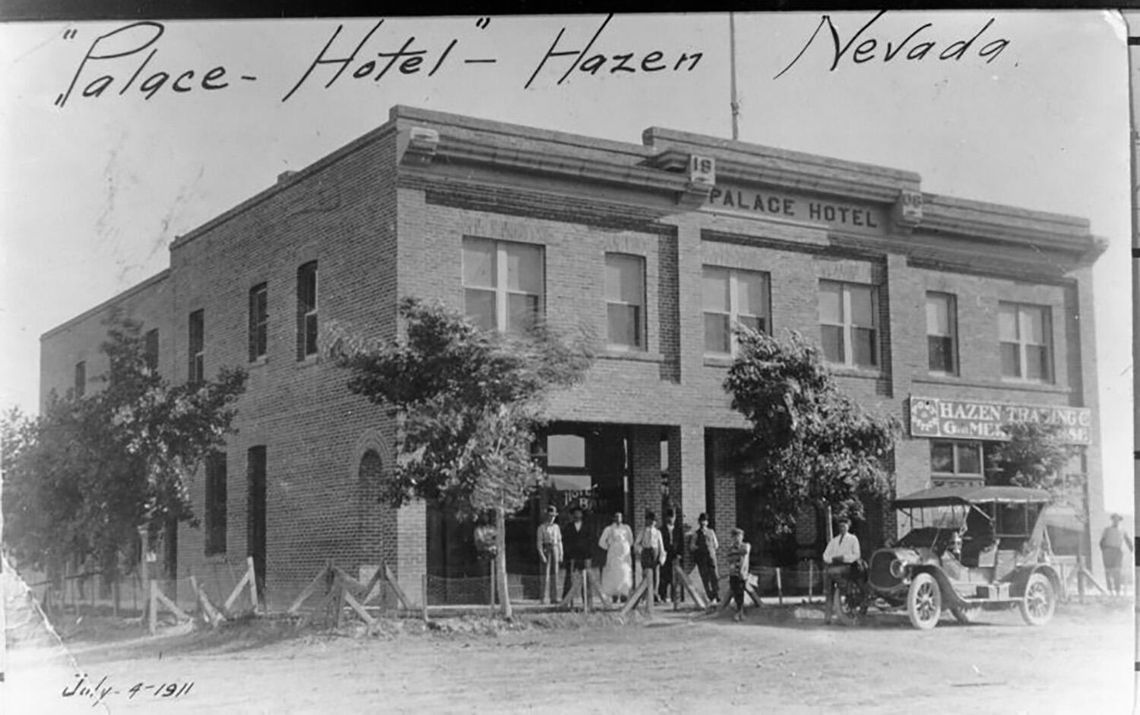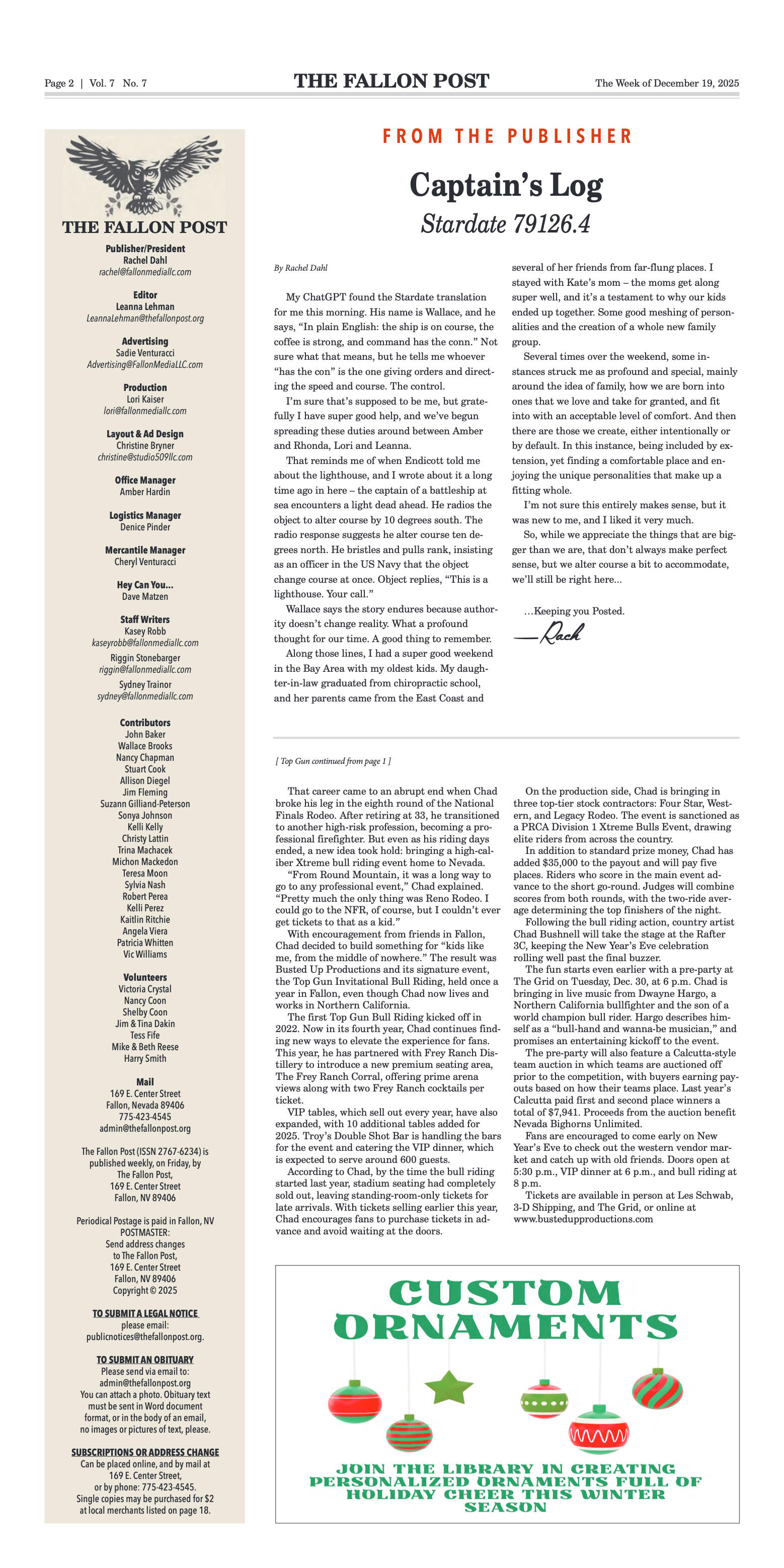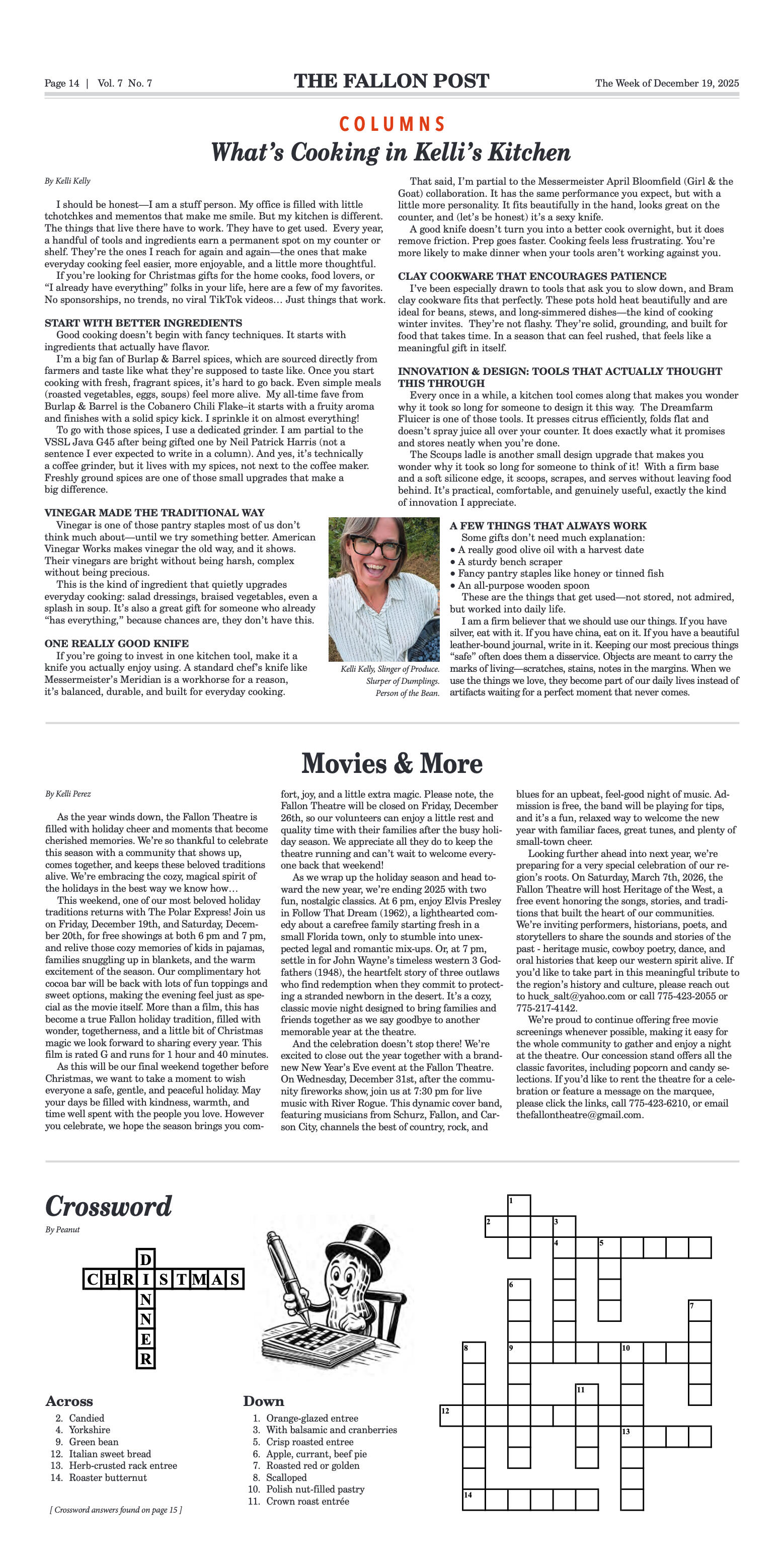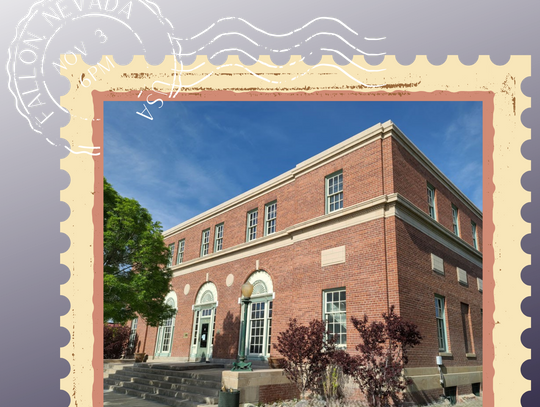Jim Curran sent me an informative article published in the Third Biennial Report of the Nevada Historical Society 1911-1912. The article was originally a University of Nevada thesis, written by Vera E. Harch, Cora M. Cleator and Florence L. Bray. They divided into categories the names of geological features and settlements found in several Nevada Counties, including Churchill. The category that caught my eye was “Names Derived from Association in Time with Some Noted Man.” Three place names in Churchill County fit that category: Churchill County itself, named for Sylvester Churchill, soldier and Mexican war hero; Grant’s Peak, named for soldier, Civil War hero, and U.S. President, Ulysses S. Grant; and Hazen, named for William Babcock Hazen, soldier and Civil War hero. All of the “noted men” reflect Nevada’s identity as a new western state, born of the Civil War and the Indian Wars and steeped in the mythology of calvary, military strategy and battle. After all, Nevada is the Battle Born State.
While most of us recognize the Churchill and Grant allusions, not all of us know about the man for whom Hazen, Nevada was named-- William Babcock Hazen. Born in Vermont in 1830 and raised in Ohio, he had a suitably distinguished academic record to gain admission to the United States Military Academy, graduating in 1853. Before the beginning of the Civil War, he fought on the frontier in the Pacific Northwest and Texas, but after the war began, he was awarded a series of commands and helped achieve victories at Shiloh, Chattanooga, and in battles fought during Sherman’s March to the Sea. After the war concluded, he rose to the rank of Brigadier General and married Mildred McClean, daughter of the owner of The Wahington Post, Washington McLean. (After Hazen’s death, his widow married the acclaimed Admiral George Dewey.)
History recognizes Hazen’s talents but also reminds us of a darker side. Author Ambrose Bierce described Hazen as “the best-hated man” of the Civil War. In his 30-year military career, Hazen, according to the Warfare History Network, “managed to quarrel with various superior officers, up to and including the president of the United States. He was reprimanded, court-martialed, and removed several times from command….” His adversaries included Secretary of War, Robert Lincoln (Abraham Lincoln’s son), General Sherman, General Custer, and, as noted, President Grant. Hazen died in Wahington, D.C. in 1887. The New York Times, in an obituary, called him “aggressive and disputatious” (Wikipedia, “William Babcock Hazen”).
I do not specifically know why the early town of Hazen was given William Hazen’s name, but it is true that the town followed an unfortunate trajectory of rise and fall, peace and turmoil, success and failure, as had its namesake. It was founded in 1903 as a station along the Southern Pacific Railroad and served as a camp for workers engaged in constructing Derby Dam, the Truckee Canal, and Lahontan Dam. It began as a tent city, but a wild one-- for a few years, the most notorious settlement on the map of Nevada. It bragged of bars and brothels, whiskey and women. In February 1905, it was the scene of a mob hanging of a notorious Derby thug named Red Wood. Nevertheless, Hazen briefly prospered-- in grand style given its isolated desert setting. It featured a deport and a roundhouse. Its main street, Nevada Street, faced the tracks, to the east and north of the present remains of the Hazen Store. At various times it was lined with the Nevada Inn, the Merchants’ Hotel, the Denver Club, the Hazen Lumber Company, Shorty’s Bar, the Keller Hotel, the Station Restaurant, Johnsten’s Restaurant, a post office, and a jail. Two newspapers, the Hazen Harvest and the Hazen Sampler, each briefly survived to print the Hazen news.
The largest blow to Hazen was delivered by fire in August 1908, when most of the buildings named above, except the depot and roundhouse, burned to the ground. Even so. the town struggled to rebuild. The November 26, 1908, just three months following the fire, the Fallon Standard announced that “Messrs. Coffin and Gruber of Hazen are having erected at Hazen one of the finest hotels in the State.” Named the Palace Hotel, it touted 30 steam-heated rooms, a ladies’ parlor and a gentlemen’s smoking room. A wooden schoolhouse was built in 1914. Despite the comeback efforts, a further blow to Hazen was the completion of Lahontan Dam in 1915, eliminating the need for accommodations for itinerant laborers and their families. In 1944, Highway 50 (originally the Lincoln Highway), was rerouted, bypassing Nevada Street, which, off the beaten path, gave way to the desert dust.
Please send your stories and thoughts to [email protected]. Photo courtesy of Churchill County Museum.












































Comment
Comments